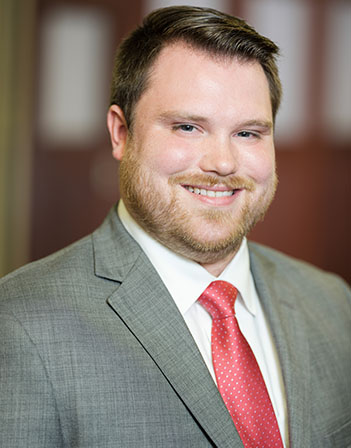
Article
DOL Releases New Back-to-School FFCRA Guidance
On August 27, 2020, the U.S. Department of Labor released new guidance regarding the Families First Coronavirus Response Act (FFCRA) in a question and answer format. The guidance was released to address various questions regarding teleworking, remote learning, and other issues that are sure to surface as schools open throughout the country.
School Closures
The guidance confirms that a child’s school or place of care is “closed” for purposes of the FFCRA if it has moved completely to distance or virtual learning and the “physical location” is closed. For schools that create “hybrid” programs whereby the school is open on certain days, and virtual learning takes place on other days, an employee is “eligible to take paid leave under the FFCRA [only] on days when [the employee’s] child is not permitted to attend school in person and must instead engage in remote learning.”
Schools that give parents the option of having their children either physically attend school or engage in remote learning are not considered “closed” for purposes of the FFCRA. So long as the child has the option of physically attending school, the school is “open” and an employee cannot take expanded family leave to care for that child. If the school currently is under a remote learning program but may later reopen for physical attendance, the school is considered “closed” for FFCRA purposes unless and until it permits in-person instruction.
Additionally, employees cannot take family leave to care for a child whose school has closed if that child is over the age of 18, unless the child has a disability and cannot care for him or herself due to that disability.
Leave Under Existing Policies
An employer may not require employer-provided paid leave to run concurrently with — that is, cover the same hours as — paid sick leave under the Emergency Paid Sick Leave Act.
However, the guidance states that employers may require employees to take paid leave under an existing paid leave policy concurrent with expanded family leave under the EFMLEA “[a]fter the first two workweeks (usually 10 workdays) of expanded family and medical leave under the EFMLEA.” In other words, for an employee who is taking expanded family leave for the closure of a school or childcare provider, the employer is limited to the following:
1) First two weeks: Cannot run other paid leave concurrently.
2) Remaining ten weeks: May run other paid leave concurrently. However, the employer cannot require the employee to use medical or sick leave under an employer policy if the employee (or covered family member) is not ill. Under this guidance, it would be permissible to require the employee to use available vacation or PTO days for this remaining ten weeks of leave.
Employees With COVID-19 Symptoms
The Department of Labor also provided guidance on employees who “self-diagnose.” The guidance provides that employees “may not take paid sick leave under the FFCRA if [they] unilaterally decide to self-quarantine for an illness without medical advice, even if [they] have COVID-19 symptoms.”
The guidance also confirms that employees are not permitted to take paid sick leave under the FFCRA if they become ill with an illness not related to COVID-19. However, many states, including New Jersey, New York and Massachusetts, provide paid sick leave that would cover other non-COVID illnesses.
In cases where an employee is returning from leave, an employer might have concerns that the employee has been exposed to COVID-19 and potentially could infect other employees. In general, an employee returning from paid sick leave under FFCRA has a right to be restored to the same or an equivalent position. However, where the employer has a legitimate fear of COVID-19 exposure, the employer may temporarily reinstate the employee to an equivalent position requiring less interaction with co-workers, or require that the employee telework. An employer also may require any employee who knows he or she has interacted with a COVID-infected person to telework or take leave until the employee personally has tested negative for COVID-19 infection. However, the employer may not require the employee to telework or be tested for COVID-19 simply because the employee took leave under the FFCRA. Therefore, it appears that an employer must be able to point to additional information suggesting COVID exposure and would be wise to document that additional information if the employer takes any action other than reinstating the employee to his or her prior position.
Recordkeeping
Whenever an employee requests leave, the employer must keep a record of the following items:
1) the name of the employee requesting leave;
2) the date(s) for which leave is requested;
3) the reason for leave; and
4) a statement from the employee that he or she is unable to work because of the reason.
If an employee requests leave due to a quarantine order from a government entity or on the recommendation of a medical professional to self-quarantine, the employer should document the name of the government entity and/or medical provider.
If an employee requests leave to care for his or her child whose school or place of care is closed, or child care provider is unavailable, the employer must also document the following:
1) the name of the child being cared for;
2) the name of the school, place of care, or child care provider that has closed or become unavailable; and
3) a statement from the employee that no other suitable person is available to care for the child.
Employees requesting leave are required to provide all of the information listed above. Additionally, employees who claim to have symptoms of COVID-19 and are taking leave to obtain a diagnosis may be required by the employer to provide a list of symptoms and the date on which a test or medical exam will take place.
Relation to Other Forms of Leave
The guidance makes it clear that expanded family leave is FMLA leave. If an employer was covered by the FMLA prior to April 1, 2020, an employee’s eligibility for expanded family leave depends on how much leave the employee already had taken during the 12-month period that the employer uses for calculating available FMLA leave. An employee may take 12 workweeks for FMLA or expanded family and medical leave reasons during a 12-month period. If an employee has taken some, but not all, of the 12 workweeks of leave available under FMLA during the current 12-month period determined by the employer, the employee may take the remaining portion of leave available. If the employee already has taken 12 workweeks of FMLA leave during this 12-month period, the employee may not take additional expanded family and medical leave.
In general, an employee may not take FFCRA leave if the employee is receiving workers’ compensation or temporary disability benefits, unless the employee returned to light duty before taking leave. An employee also is not permitted to take FFCRA leave if the employee is on a mandatory leave of absence. However, the employer may end a voluntary leave of absence and begin taking paid sick leave or expanded family leave.
Intermittent Leave
As schools around the country open in varying degrees, employers are faced with employees who have childcare issues because their children only are in school two or three days each week and, sometimes, only for half-days. The Department of Labor previously had advised that FFCRA leave (both sick leave as well as the expanded family leave) could be taken intermittently only if the employer were to allow it. However, a recent federal court decision out of New York struck down this provision, essentially holding that employees must be permitted to take the FFCRA leave intermittently. A more detailed discussion regarding this decision can be found in one of our previous COVID-19 resource articles.
Instead of revising its regulations to comply with this decision, it appears that the Department of Labor has doubled-down on its prior guidance. In issuing this expanded list of questions and answers, the Department of Labor again notes that an employee can take intermittent family leave or paid sick leave while teleworking, provided the “employer allows it.” The guidance also states that intermittent leave may be taken in “any increment,” provided the employer and employee agree.
The rules are quite different for employees who are physically present in the workplace. First, with regard to paid sick leave, employees physically present in the workplace must use intermittent paid sick leave only “in full day increments,” and paid sick leave cannot be taken intermittently if taken pursuant to a quarantine order, to care for someone who is either subject to a quarantine order or who was advised to self-quarantine, or where the employee has symptoms of COVID-19 or is caring for someone with symptoms. In such cases, paid sick leave must be used either until it is exhausted or the employee no longer has a qualifying reason to take paid sick leave. In contrast, employees may take paid sick leave intermittently — but again, only in full day increments — if the employee is taking paid sick leave to care for a child whose school or place of care is closed, or whose child care provider is unavailable, because of COVID-19 related reasons. Furthermore, the employer must agree and grant permission in order for an employee to take intermittent paid sick leave.
Employees who physically are present in the workplace also are permitted to take intermittent family leave, but again, must receive the employer’s permission. The “full day increment” requirement is not mentioned with regard to family leave taken by employees who are physically present in the workplace. It is therefore unclear if this requirement applies to family leave, or only to sick leave.
Conclusion
In sum, the Department of Labor’s new guidance provides important clarifications and new information regarding implementation of the FFCRA that will be important as schools continue to open throughout the country. At this point, it is recommended that you review your leave policies to ensure compliance with this recent update. The Department of Labor also may release further guidance in the next several months before the FFCRA expires at the end of the year. Porzio will continue to keep you updated in this area.



